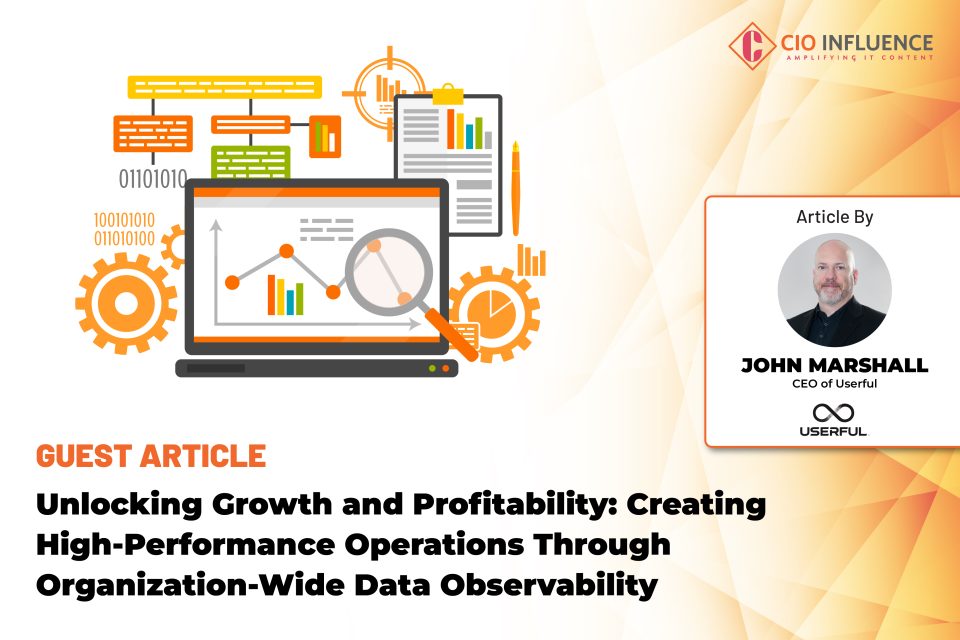Datametrics and analytics are becoming pervasive in every corner of business, but how do we distill them into critical actions and operationalize them? Connecting your business analytics to operations is the “last mile” of business intelligence and digital transformation.
In today’s competitive business landscape, data and analytics are indispensable for driving organizational success. From sales metrics and operational efficiencies to customer insights, data is everywhere. However, the value lies in transforming data into operational action, whether that raw data is video, audio, images, schematics, datametrics, IOT triggers, or other. Nimble operations require a real-time big-picture view, enabling swift decisions that can augment profitability. This presents a challenge as the complexity of data sources grows, raising the fundamental question: How can we turn this information into more efficient operations?
Also Read: Bots and Deepfakes: How Do We Navigate the New Era of Digital Identity?
The “last mile” of business intelligence
Many companies have invested heavily in business intelligence platforms, enterprise resource planning (ERP) systems, and productivity tools. Despite these investments, there remains a significant gap in connecting data insights with operational execution. This gap, commonly referred to as the “last mile” of business intelligence is where companies struggle to turn information into operations.
As organizations adopt more tools, they often create even more virtual silos that prevent a clear, big picture of their operations. For example, an ERP-only view risks insights that could be gathered from CRM data. A CRM-only view might risk insights from PowerBI insights on production data. Isolated systems make it difficult to make informed decisions. Without an aggregated view through a command center, control room, or unified dashboard to connect and integrate these systems, businesses risk being overwhelmed by their own data — missing out on the full potential and efficiencies that systems are meant to deliver.
Operational data observability: path to high-performance operations
Centralizing data observability addresses this challenge by enabling real-time monitoring and analysis of key performance metrics. By connecting data streams across different business functions such as operations, supply chain, and customer support, operational data observability provides a unified real-time view of performance. This interconnected approach ensures that the right data is surfaced to the right teams at the right time, enabling more effective decision-making.
According to research, implementing centralized monitoring in manufacturing environments can lead to cost savings of up to 30 percent through improved resource utilization and reduced downtime. It also enables throughput improvements of up to 20 percent. And, centralized monitoring with interconnection to the frontline operator can dramatically improve production quality, reducing defect rates, enhancing product consistency, and improving overall product quality, resulting in improved customer satisfaction ratings. Whether it be manufacturing, production, transportation, logistics, healthcare, or similar operationally intensive environments, centralized monitoring through a data observability platform is pivotal.
The need for integration and prioritization
This is where Unified dashboard management platforms play a critical role. They are essential for aggregating and centralizing data, and then distributing this information anywhere in an organization regionally, nationally, or internationally.
At Userful, we’ve seen the transformative impact of this approach. Our Trends application for Data Dashboards leveraged by Userful’s Infinity Platform, enables organizations to create seamless, real-time monitoring environments. By visualizing data from multiple sources on a singular dashboard, with prompts for where action is needed, decision-makers gain up-to-the-minute insights tailored to their operational needs, empowering them to take immediate action and guide local or remote operations through the platform’s ability to push critical information to the front line of operations using collaborative tools.
The profitability impact
Ultimately, the goal of any business is to drive profitability, and operationalizing data is key to achieving this. Data observability and operational efficiency go hand-in-hand: when businesses can make faster, smarter decisions based on real-time data, they can better position themselves to seize opportunities, cut costs, and avoid costly errors.
For instance, real-time detection of operational inefficiencies allows companies to address issues before they escalate, preventing disruptions that could affect the bottom line. Similarly, real-time visibility into sales and customer behavior enables businesses to adjust their strategies in response to market shifts, maximizing revenue potential.
By ensuring that data is actionable and directly linked to operational performance, businesses can create environments where every data point contributes to the company’s growth and profitability.
Conclusion
“The future of operations is data-driven and IT can lead this charge by proactively enabling multi-source insights through a data observability platform.”
In today’s era of digital transformation, the companies that thrive will be those that not only gather data but also integrate it to their operations. The true value of data lies in its ability to drive real-time decision-making and operational execution. Operational data observability is the key to unlocking this value. By bridging the gap between data insights and operational execution, businesses can create high-performance operations that lead to sustained growth and profitability.
Connecting business analytics to operations — the “last mile” of digital transformation, is no longer a choice but a necessity. Organizations that can operationalize data and prioritize actions based on real-time insights will be well-positioned to lead in their respective markets. Through a unified, data-driven approach, they can achieve the agility, efficiency, and profitability that are essential for success in the modern business world.
[To share your insights with us as part of editorial or sponsored content, please write to psen@itechseries.com]


